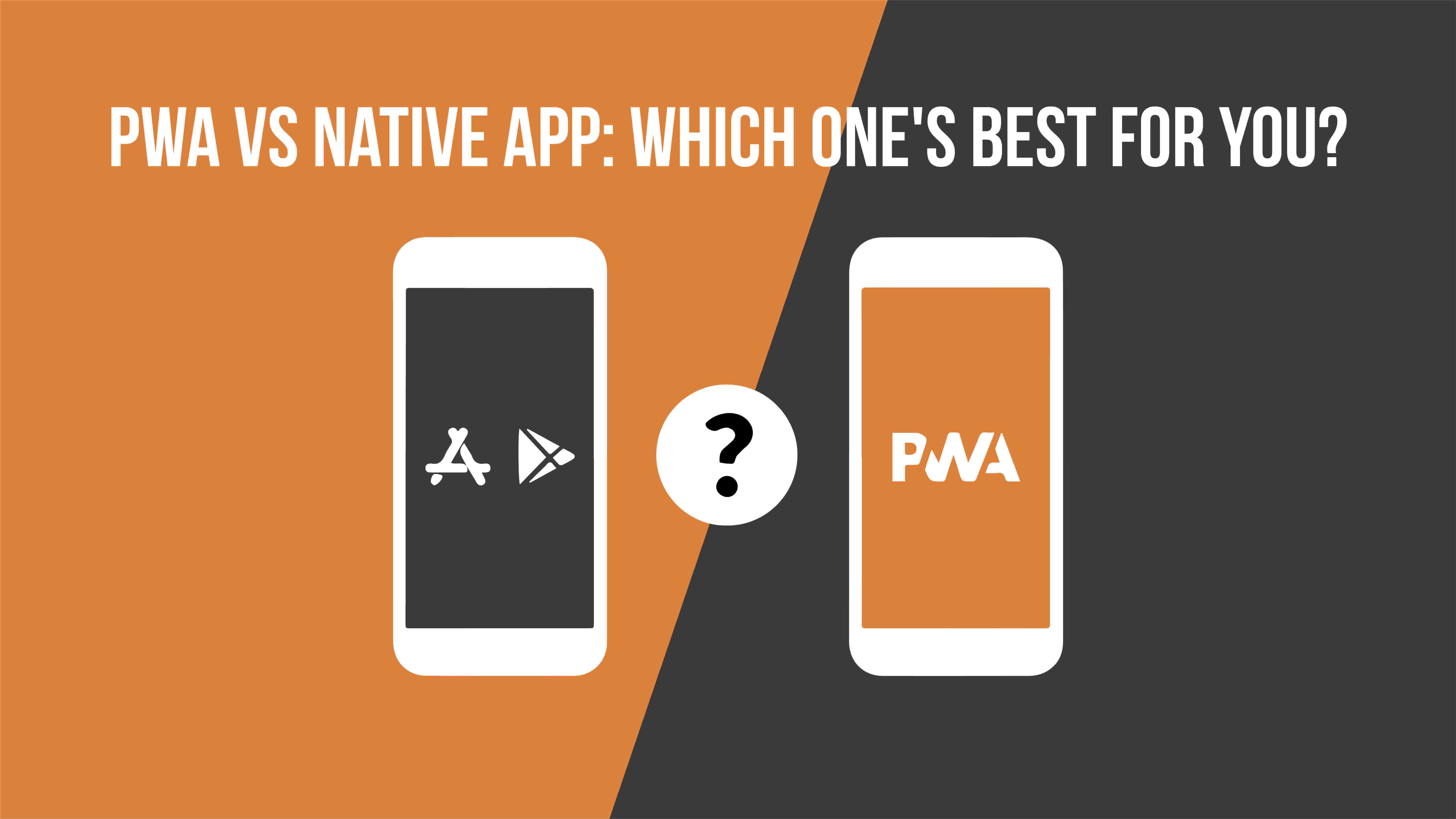Even in 2020, it’s a big deal to choose what kind of app it’s better to create. Everyone is talking about PWAs as the future of app development. But whether it is a reason why we should give app native apps? Let’s find out together.👁🗨
Before we start, it’s better to memorize the difference between these two types of apps.

To say a word about native apps,
Native apps are created for a specific platform, for iOS and Android.
For iOS, we write them in Swift, React Native, C# or Flutter, while for Android we use Java or Kotlin. By building a native application, we can fully communicate with the device on which it will run.
If we talk about PWA,
PWA is nothing more than websites with additional functions, thanks to which they display and operate equally in different systems and different screens.
So, it is a “native-like experience”, i.e. operation like a native application, but just at first look. For PWAs we can use different modern technologies and frameworks. Therefore, we can look at their usefulness, speed of operation, startup time, offline operation and several other functionalities. To know more about progressive web apps you can here 👈.
Let’s look closer at their difference:
Platforms👩💻:
- PWA : cross-platform;
- Native apps: Platform-specific(iOS or Android)
Access🤞:
- PWA : The first time you visit the site, you can add it to your desktop with one click.;
- Native apps: You should enter the store of the given platform, register at the first entry, search for the application, wait until it is downloaded (it happens that a good quality internet connection is required or there is not enough space in the phone and you need to remove something to continue downloading), and accept the consent.
Application flexibility👍:
- PWA : It looks and behaves like a native application. You can manage consumer data, online orders and the loyalty program as standard.;
- Native apps: Full flexibility and access to all smartphone functions.
Cost💵:
- PWA : Low cost ;
- Native apps: High cost.
Changes and updates✔:
- PWA : No installation required. They take place in real-time. As soon as they are updated, they are available to users on every platform;
- Native apps: Installation required. A native application error requires patches on two platforms, so usually you need to involve two programmers who need to find the problem, fix it, and then send the build to Apple and Google. Here, wait until companies review the builds and make them available in their stores so that the customer can download the update after receiving information that is already available.
Speed🐱💻:
- PWA : Reliable speed, thanks to Java scripts running regardless of the main Internet thread and the quality of the Internet connection ;
- Native apps: The opening speed depends on the quality of the Internet and the severity of the files that must be loaded before the user can see them.
Offline\online access💤:
- PWA : PWA can also be loaded if there is no internet connection at all. It can still send background updates and forward notifications to the user ;
- Native apps: For full functionality, you need Internet access.
Security😎:
- PWA : PWA is increasingly being programmed in a secure HTTPS environment. Therefore, consumers using a progressive app have a secure connection. If the user saves a shortcut to the page on the home screen, he receives the full native functionality of the application, including push notifications;
- Native apps: Full safety guaranteed. But native apps have access to all the necessary information on the device.
Now, it seems like we are PWAs supporters 😃 But, on the contrary, we will add some more benefits of native apps (and PWAs for sure) for you to make the right choice.
So, as native apps are specifically designed for a single platform, they are more personalized, whether it is an Android or iOS app – the best choice of communication with your costumers in your own manner.
The key benefits of native apps are:
- Native applications are faster than hybrid applications. So you can base on them e.g. mobile games
- It is easier to detect errors during testing
- They are created using modern programming languages
- High level of User Experience. You can design a UX that your customers or clients will love.
- Connection with your customers in a manner you want to.
- You can sell or promote your services directly.
- A lot of additional functions like – device sensors, inbuilt functionalities to dial mobile numbers, access voicemails, etc.
- An app can work on slow internet connections.
It’s time to add a bit about the benefits of progressive web applications(PWAs):
- Browser independence. The application can work for every user, regardless of where they display it.
- Safety. Each PWA must use the HTTPS protocol to ensure secure data transfer.
- Responsibility. The website must be mobile-friendly, work quickly and seamlessly move between specific elements. If it is not possible to display the entire page in a short time, a placeholder must appear while it is loading.
- Offline functionality. An app loads content in the cache of a mobile device.
- High speed. The reason why users really love this kind of apps.
- Lower data usage
- Push notifications which help users to be in touch with everyone or get a quick summary of some updates.
- Easier navigation than the full desktop website on a mobile device.
So, jump to the conclusion, needless to say that it’s up to you, which kind of app you want to build. Before your final choice, you need to analyze what is your goals and what functionality you want to have and share with your users. PWAs and native apps both have some advantages and disadvantages. But, if you still hesitating, let us know. We are happy to help and choose the best solution for you😊.


